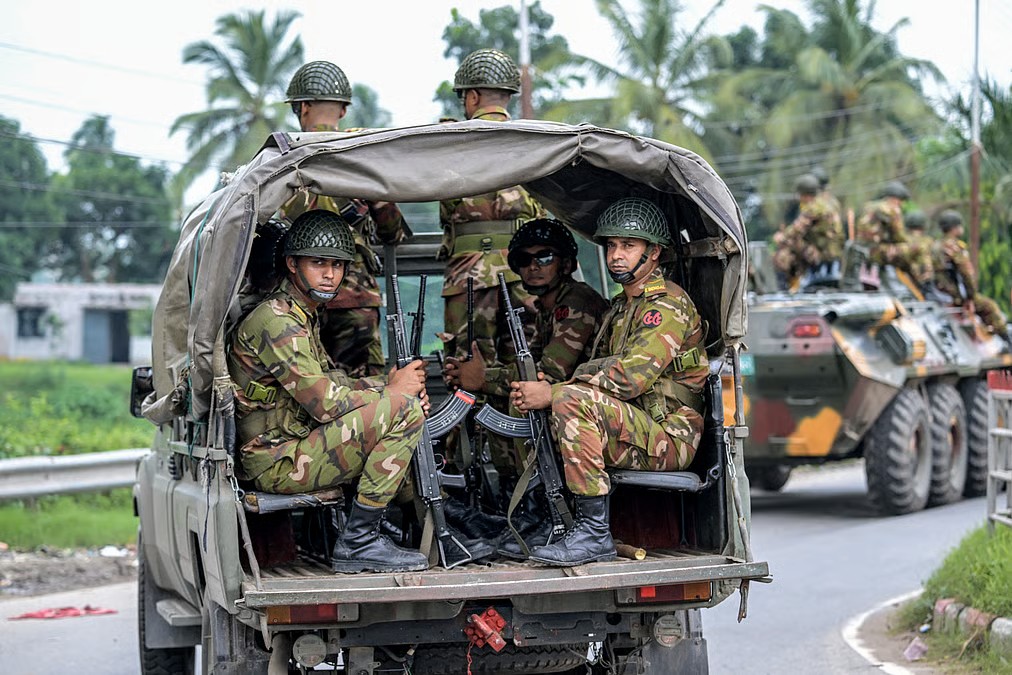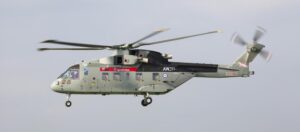The Bangladesh Army’s recent proposal to establish over 250 new camps across the Chittagong Hill Tracts (CHT) marks a significant evolution in Dhaka’s approach to securing one of the country’s most sensitive and strategically vital regions. With each camp requiring approximately 32 personnel, this expansion translates to around 8,000 additional troops — the equivalent of roughly two infantry brigades. While this increase would strengthen local security and improve response capability, it also highlights the pressing need for a permanent, long-term force structure tailored specifically to the CHT’s unique terrain and security challenges.
Short-Term Adjustments and Force Redeployment
In the immediate term, the Army could only meet the manpower requirement through internal redeployment. Elements from existing formations across Bangladesh would need to be reassigned to the hill districts of Khagrachari, Rangamati and Bandarban. While feasible as a temporary measure, such redistribution risks diluting troop concentrations in other strategic areas and reducing operational flexibility nationwide. The CHT’s difficult terrain, dispersed population, and porous borders require a force that is both permanently based and locally integrated — not one that relies on rotational detachments from distant units.
The Case for a Dedicated CHT Division
Long-term stability and control in the CHT demand the establishment of a new infantry division specifically tasked with the region’s defence and security. The CHT encompasses over 13,000 square kilometres of rugged, forested terrain bordered by India and Myanmar — a geography that presents logistical and operational difficulties for conventional formations designed for the plains. A new division would allow the Army to structure its manpower, training, and infrastructure around the requirements of mountain and jungle warfare, cross-border surveillance, and counter-insurgency operations.
The Khagrachari area stands out as the logical location for the division headquarters. Centrally positioned within the CHT and already hosting significant military infrastructure, Khagrachari offers direct access to the main communication routes linking the three hill districts. The existing 24 Infantry Division, headquartered in Chattogram, currently oversees operations in the region. However, with the establishment of a new division, the 24th’s formations could be redeployed to other sectors while the new command assumes full responsibility for the CHT’s security.
Primary Responsibilities: Intelligence, Coordination and Rapid Response
The new division should be configured with a clear operational mandate that goes beyond static presence. Its primary responsibilities must include: persistent human and technical intelligence collection across the CHT; close coordination with the Border Guard, police and civil administration; and rapid-response capability to emerging threats or crises. Structuring the division around these tasks will ensure it is not merely a garrison force but an active operational headquarters capable of shaping the security environment.
To fulfil these missions, the division should lead on inter-agency intelligence fusion — acting as the central node that aggregates HUMINT from local units, law-enforcement reporting, and national-level signals and imagery inputs. This coordination role is crucial to prevent duplicative effort, ensure timely action on leads, and maintain a coherent operational picture across the complex hill terrain.
Required Capabilities and Equipment
Operational effectiveness in the CHT will require appropriate force multipliers. The division should be equipped and resourced with:
- Mine-Resistant Ambush Protected vehicles (MRAPs) and protected patrol vehicles for personnel movement on contested routes and for convoy protection in areas with IED/threat risk.
- Unmanned Aerial Vehicles (UAVs) — both rotary and fixed-wing — for persistent aerial surveillance, target acquisition, and close reconnaissance over difficult terrain.
- SIGINT and electronic collection systems to detect and disrupt hostile communications and to provide real-time targeting and situational awareness.
- Attack helicopters to provide fire support and armed reconnaissance in high-risk engagements, especially where ground access is restricted.
- Multi-role transport helicopters for rapid mobility, casualty evacuation (CASEVAC), resupply and insertion of quick reaction forces into remote locations.
These capabilities would enable the division to detect, deter and if necessary defeat threats with speed and precision while reducing the operational risk to dismounted troops.
Infrastructure: Dispersed Air and Sensor Network
Achieving genuine operational reach in the CHT requires investment in supporting infrastructure:
- New airstrips and helipads at strategic nodes across the three hill districts to enable helicopter operations under a range of conditions and to shorten response times.
- A network of check posts and integrated ‘hill forts’ — consolidated, hardened outposts that combine barracks, logistics nodes and command centres — positioned to control key approaches and population centres.
- Each major outpost should be fitted with full sensor suites including ground surveillance radars (GSRs), optical/EO sensors, thermal imaging and acoustic sensors where appropriate, linked into the division’s command network for real-time monitoring.
- Hardened communications infrastructure and redundant links to permit continuous data flow between remote sensors, UAVs, SIGINT nodes and the divisional headquarters.
Such an integrated air and sensor architecture will multiply the division’s situational awareness and allow for precision allocation of limited ground forces.
Recruitment and Local Integration
An effective CHT division should reflect the human geography of the area it protects. The Army would benefit greatly from recruiting personnel from the hill communities and Bengali residents of the region, whose familiarity with the terrain, local languages, and social structures would enhance intelligence-gathering, mobility, and cooperation with local populations. Such integration also carries strategic value: a security force that represents local demographics can act as a stabilising influence, reducing distrust and fostering a sense of national inclusion.
Recruitment, however, must remain merit-based and inclusive, guided by professional standards rather than ethnic quotas. The Army could conduct targeted outreach programmes in the hill districts — including scholarship schemes, cadet recruitment drives, and career fairs — to attract capable candidates from the area. Integrating local recruits alongside personnel from other regions would maintain cohesion while ensuring that units operating in the CHT possess the cultural and environmental awareness vital for success. Language and cultural training for all personnel, and strong anti-discrimination safeguards, are essential to sustain unit cohesion.
Training, Logistics, and Support Units
The CHT’s terrain requires specialised training and robust logistics. The division should include dedicated mountain and jungle warfare training elements, engineers capable of rapid road and bridge repair, signal units optimised for line-of-sight and satellite communications, and medical units prepared for austere casualty care and aeromedical evacuation. Aviation detachments, forward arming and refuelling points (FARPs), and logistic hubs located close to operational zones will be necessary to sustain tempo.
Consolidating smaller temporary camps into well-resourced permanent bases will improve sustainment and reduce logistical strain while maintaining coverage across critical sectors.
Strategic and Regional Significance
The CHT sits at the crossroads of Bangladesh’s borders with India and Myanmar, making it strategically vital for both internal security and regional stability. Insurgent movements, cross-border trafficking, and illegal migration have historically complicated governance in the area. A robust, permanent military presence under a unified divisional command would enhance Dhaka’s ability to monitor its frontiers, deter infiltration, and respond rapidly to crises on either border.
The division’s integrated intelligence and aviation capabilities would also strengthen cooperation with national security agencies and, where appropriate, allied and partner security services, contributing to a layered and interoperable approach to frontier security.
Balancing Security and Stability
Beyond its military function, a locally integrated division could play an important civic role. Military-led infrastructure, health, and education initiatives have long been part of the Army’s contribution to national development. Expanding these programmes in the CHT, under the leadership of a regionally based division, would help bridge gaps between communities and strengthen the state’s presence in remote areas. When coupled with responsible security operations and community liaison, such initiatives can transform the Army’s presence from that of an external garrison to a trusted local institution.
Conclusion
The Bangladesh Army’s plan to expand its footprint in the Chittagong Hill Tracts is a logical response to the region’s persistent security challenges. Temporary redeployments alone cannot provide a sustainable solution. The creation of a new infantry division headquartered in Khagrachari, equipped with MRAPs, UAVs, SIGINT collection systems, attack and multi-role helicopters, and supported by new airstrips, helipads and sensor-equipped hill forts, would provide the structural permanence, technical capability and rapid-response posture required to secure the CHT for the long term.
By combining professional military planning with inclusive, locally focused recruitment and strong inter-agency coordination, the Army can build a force that not only protects the region but also strengthens national unity and trust. Such a step would mark a major stride toward both strategic stability and comprehensive development in Bangladesh’s south-eastern frontier.
Annex A — Proposed Order of Battle (ORBAT)
| Formation / Unit | Role / Capability |
|---|---|
| Divisional HQ & HQ Company | Command, planning, intelligence fusion, inter-agency coordination |
| Signal Regiment | Tactical communications, SATCOM, data networks |
| Military Intelligence Detachment | HUMINT, SIGINT, and imagery analysis |
| Provost Company | Military police and garrison discipline |
| 3 × Infantry Brigades | Core manoeuvre formations (each comprising 3 infantry battalions and 1 reconnaissance company) |
| 1 × Artillery Brigade | Light towed, medium gun and 120mm mortar-based indirect fire support |
| 1 × Engineer Battalion | Construction, road/bridge repair, fortification and route clearance |
| 1 × Air Defence Battery | Short-range protection of key installations |
| 1 × Signals Intelligence / Electronic Warfare Company | Tactical intercept, DF, jamming, and data collection |
| 1 × Reconnaissance Squadron | Forward patrols, long-range observation, liaison with UAV units |
| 1 × Divisional Aviation Support Element | Coordination of attack and utility helicopter squadrons |
| 1 × Logistic Regiment | Transport, supply, maintenance, and fuel operations |
| 1 × Medical Battalion | Field hospitals, CASEVAC and aeromedical support |
| Civil-Military Cooperation (CIMIC) Team | Development, disaster relief, and community outreach |
| UAV / RSTA Group | Tactical and operational-level drone operations |
| EOD / IEDD Detachment | Counter-IED and explosive ordnance disposal |
| Mountain & Jungle Warfare Training Wing | Specialised local terrain training |
Annex B — Major Baseline Equipment and Infrastructure Estimate
| Category | Equipment / Infrastructure | Indicative Quantity / Remarks | Model / Variant |
|---|---|---|---|
| Protected Mobility | MRAPs and Light Armoured Patrol Vehicles | 150–250 across brigades | M1224 MaxxPro and Otokar Cobra II |
| Light Utility / 4×4 Vehicles | 200–300 for liaison, logistics, and QRF | Toyota Land Cruiser 70 series | |
| Unmanned Systems | Tactical UAVs (rotary & fixed wing) | 60–100 (company to brigade level) | Indigenous types/DJI |
| MALE UAVs (ISR/Strike) | 2–6 (division level) | TB2 | |
| Aviation Assets | Attack Helicopters | 8 | AH-1Z or equivalent |
| Multi-Role Utility Helicopters | 8–16 (lift, CASEVAC, resupply) | Mi-171Sh and UH-60L | |
| FARPs / Helipads | 8–16 across CHT districts | ||
| Fire Support | 105 mm Light Guns / 120 mm Mortars | 36 (Two regiments) | Boran / ALKAR |
| 155 mm Howitzers (limited terrain) | 18 (One regiment) | SH-15 | |
| Sensors & Surveillance | Ground Surveillance Radars (GSRs) | 6–12 | Retinar PTR |
| EO / Thermal Sensor Towers | 25–40 at forts and border points | Dragoneye | |
| SIGINT / EW Suites | 3–6 (major systems) + tactical nodes | TEWS | |
| Infrastructure | Integrated Hill Forts / Hardened Outposts | 20–40 major complexes | |
| Secondary Checkposts / OPs | 60–100 | ||
| Airstrips (STOL-capable) | 1–3 for logistics and emergency operations | Maintained stations | |
| Support | EOD Teams, Medical Facilities, Logistic Depots | As required per brigade / divisional support | |
| Watercraft | Type D fast assault craft | 36 | Tri-shark, Kingfisher-29 or Metal Shark |
| Type C landing / transport craft | 12 | Type C | |
| RHIBs | 20 | Hurricane |
Implementation Considerations
- Phased Raising: Begin with the divisional HQ, one brigade and core support units, expanding to full strength over 3–5 years.
- Inter-Agency Liaison: Maintain coordination with BGB, police, and intelligence agencies for unified operations.
- Local Recruitment and Retention: Establish training pipelines in CHT cantonments to ensure long-term sustainment.
- Sustainment Capacity: Procurement should match national maintenance, spares, and fuel infrastructure capabilities.
- Civil-Military Balance: Emphasise community liaison, legal oversight, and respect for civil governance to ensure durable peace.
Final Assessment
A Khagrachari-based Infantry Division represents the natural evolution of the Bangladesh Army’s mission in the Chittagong Hill Tracts — combining permanent military presence, intelligence-led operations, advanced mobility, and locally integrated manpower. Such a formation would not only safeguard Bangladesh’s south-eastern frontier but also reinforce the Army’s role as a stabilising force supporting national development and unity.

Khaled Ahmed is a seasoned former intelligence analyst and military expert from the Netherlands, bringing over 15 years of specialised experience in operational intelligence, threat analysis, and strategic defence planning. Having served in high-level, classified roles within Dutch military intelligence, he possesses rare expertise in European security architecture, NATO doctrine, and asymmetric warfare. Khaled’s deep operational insight and international perspective enable him to deliver precision-driven intelligence analysis and forward-looking strategic forecasts. A trusted contributor to high-level risk assessments and security briefings, he offers readers clarity on complex defence and security challenges. Khaled leads the National Security and Fact Analysis sections at BDMilitary. He holds a Master’s degree in International Relations from the University of Groningen, The Netherlands, and is fluent in Dutch, French, and Arabic — combining linguistic dexterity with operational expertise to analyse security issues across cultures and regions.



